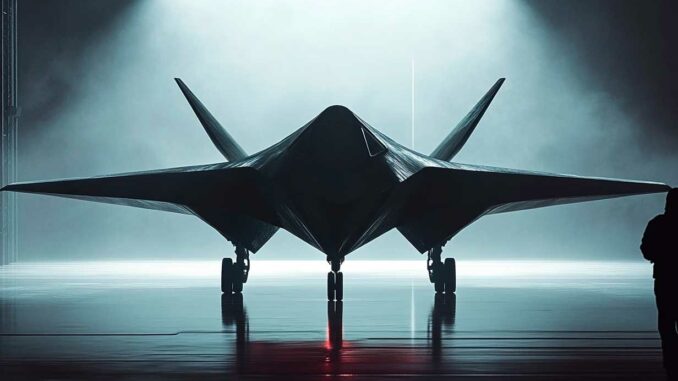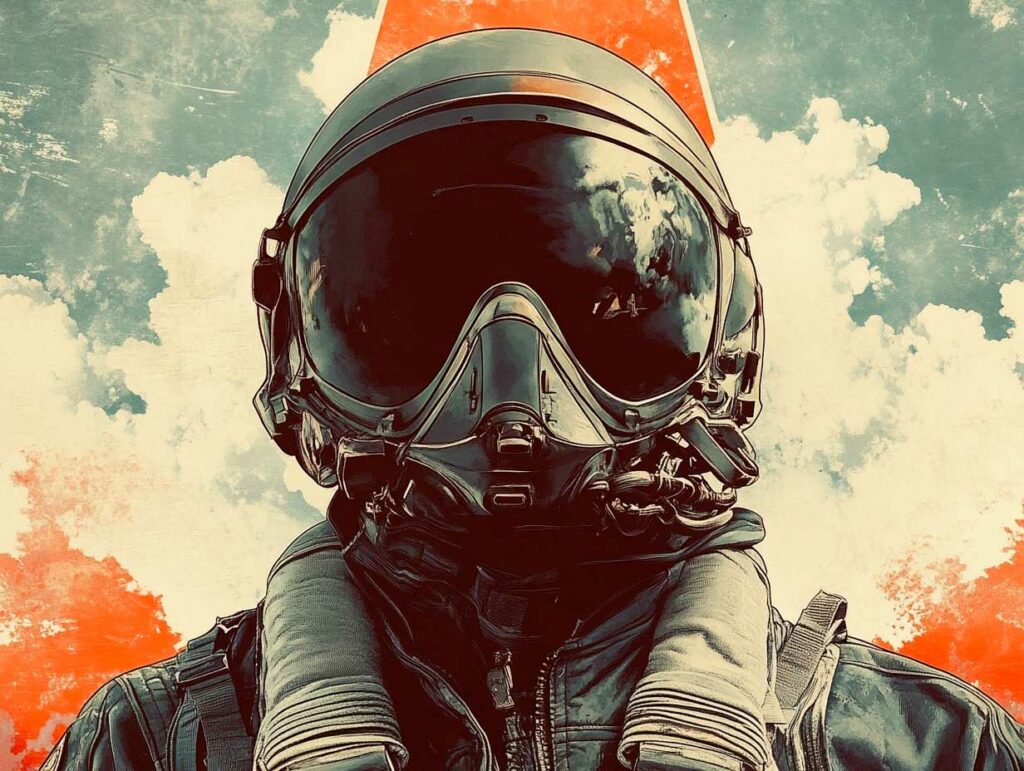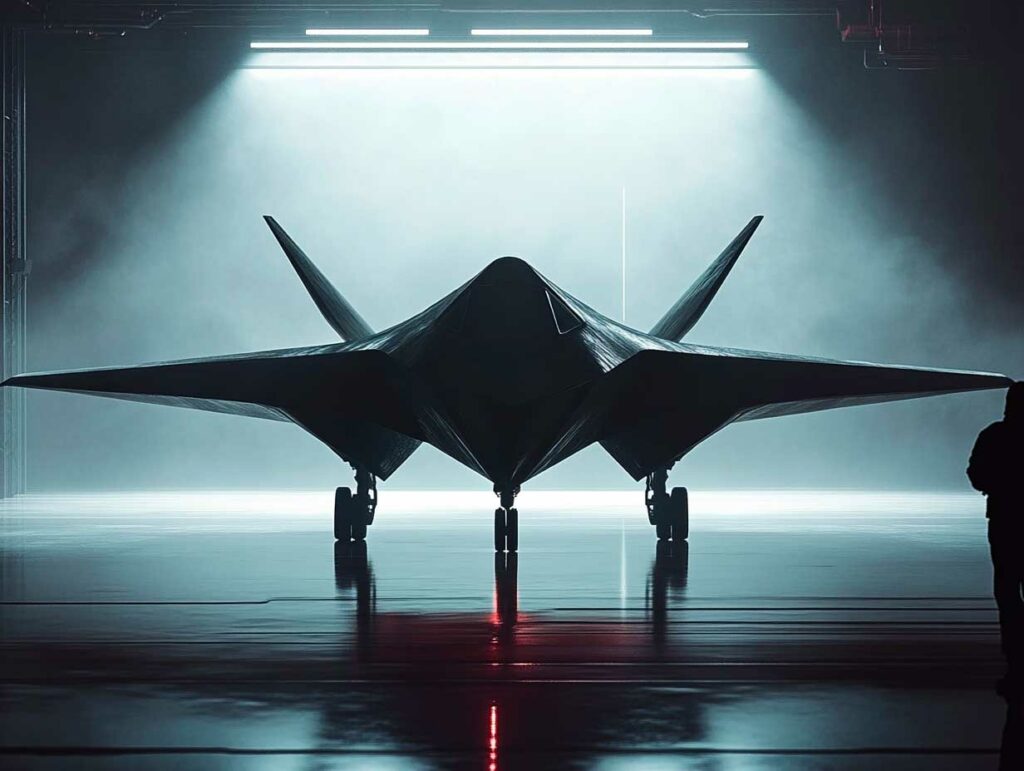
Explore future fighter jets: advanced stealth, AI, hypersonic weapons, secure comms, and intelligence systems for 2040 air dominance.
The best future fighter jet – key points
- Research suggests future fighter jets will have advanced stealth and AI for better evasion and decision-making.
- It seems likely they’ll integrate drones for teamwork and use secure satellite communications.
- The evidence leans toward hypersonic missiles and lasers as key armaments, with controversy over development costs.
- Intelligence systems will likely use sensor fusion for real-time battlefield awareness, but timelines and costs remain debated.
Capabilities and Advantages
Future fighter jets, like the European Future Combat Air System (FCAS) and US Next Generation Air Dominance (NGAD), are expected to feature advanced stealth for evasion, powered by next-generation engines for optimal performance. They’ll likely integrate AI for decision-making and collaborate with drones, enhancing lethality and situational awareness. These jets will offer flexibility through open architectures, potentially reducing operational costs, though development costs are a debated topic.
Armament
Expected armaments include hypersonic missiles for speed, directed energy weapons like lasers, and very-long-range weapons, alongside swarm drones for overwhelming enemy defenses.
Communication Systems
They’ll use fast, secure satellite-based communications and a combat cloud for real-time data sharing, ensuring coordination with other systems.
Intelligence Systems
AI will aid decision-making, with sensor fusion and multiple intelligence sources providing near-real-time battlefield awareness, crucial for modern warfare.

Detailed Analysis of Future Fighter Jet Capabilities
The question of the capabilities, advantages, armament, communication systems, and intelligence systems of the best future fighter jet is complex, given ongoing global developments and the sensitive nature of military technology. This analysis draws on recent insights into sixth-generation fighter programs, particularly the European Future Combat Air System (FCAS) and the US Next Generation Air Dominance (NGAD), as of May 16, 2025, to provide a comprehensive overview.
Background and Context
Sixth-generation fighter jets represent the evolution beyond fifth-generation aircraft like the F-22 and F-35, aiming to address future air-to-air combat, anti-access/area denial, and ground support missions in increasingly contested environments. Research suggests these jets will operate in networked environments, integrating with satellite drones, ground sensors, and unmanned systems for data-informed decision-making Sixth-generation fighter detailed capabilities. The FCAS, involving France, Germany, and Spain, targets a 2040 entry into service, while the NGAD aims for 2030, highlighting a race for technological superiority with significant economic and strategic implications (Future Combat Air System comprehensive program overview; Next Generation Air Dominance US program details).
Recent updates indicate Belgium was set to join the FCAS program by June 2025, potentially expanding collaboration, though confirmation as of May 16, 2025, is pending. The NGAD has a budget of $9 billion through 2025, with plans for engineering and manufacturing development contracts expected to be awarded in 2024, reflecting ongoing progress . Other global efforts, like the UK, Italy, and Japan’s Global Combat Air Program (GCAP), aim for a sixth-generation fighter by the mid-2030s, adding to the competitive landscape .
Capabilities and Technologies
The capabilities of future fighter jets are expected to include:
- Advanced Stealth: Designs like tailless flying wings or flying arrowheads, as seen in China’s J-36 (flown December 2024), enhance broadband stealth, making detection difficult Sixth-generation fighter detailed capabilities. The FCAS emphasizes enhanced low observability, crucial for modern combat scenarios .
- Propulsion Systems: Both FCAS and NGAD will likely use variable-cycle engines, offering optimum efficiency at any speed and altitude, with the NGAD powered by Next Generation Adaptive Propulsion (NGAP) engines like General Electric’s XA102 or Pratt & Whitney’s XA103. Recent testing in February 2024 by Pratt & Whitney advanced the XA103 towards final design review, enhancing fuel efficiency, range, and power/thermal management .
- Autonomy and Manned-Unmanned Teaming: Integration with unmanned systems is a key feature. The FCAS includes unmanned remote carriers launched from platforms like the A400M, always under human control, while the NGAD plans for Collaborative Combat Aircraft (CCAs) like the Kratos XQ-58 Valkyrie, operating as shooters, jammers, or sensors. The NGAD aims for a ratio of 2 CCAs per NGAD fighter and 2 per F-35, with 300 F-35s mentioned, indicating significant unmanned integration (Future Combat Air System comprehensive program overview; Next Generation Air Dominance US program details). India’s roadmap includes smart wingman concepts and swarm drones Sixth-generation fighter detailed capabilities.
- Networking and Integration: Both programs emphasize a system-of-systems approach. The FCAS’s combat cloud connects piloted fighters, drones, and other systems across air, ground, sea, and space, while the NGAD focuses on theater-wide integration and real-time data linking, addressing operational needs in the Indo-Pacific where current USAF fighters lack sufficient range and payload (Future Combat Air System – Wikipedia; Next Generation Air Dominance US program details).
The advantages of these capabilities include superior survivability due to stealth, increased lethality through advanced weapons, and enhanced situational awareness via AI and sensor fusion. The open architecture of the NGAD, for instance, allows for future upgrades, potentially reducing maintenance costs by 20% through digital engineering. However, controversy surrounds development costs, with the NGAD estimated at $300 million per fighter and requiring $16 billion over five years through 2028, raising debates on affordability .
Armament
Future fighter jets are expected to carry:
- Hypersonic Missiles: Capable of speeds above Mach 5, with stealth features to reduce enemy reaction times, as noted in US and European developments How new fighter jets could transform aerial combat.
- Directed Energy Weapons: Lasers for illumination or direct combat, though still under study, with potential inclusion in later stages, particularly in India’s roadmap Sixth-generation fighter detailed capabilities.
- Very-Long-Range Weapons: Designed for engagements beyond visual range, enhancing standoff capabilities Sixth-generation fighter detailed capabilities.
- Swarm Drones and Smart Wingman Concepts: India’s roadmap includes swarm drones, while the FCAS and NGAD integrate drones for missions too dangerous for pilots, with CCAs expected to carry advanced sensors, electronic warfare packages, or additional munitions (Sixth-generation fighter detailed capabilities; See the competing F-47 stealth fighter jet concepts).
These armaments will likely provide a significant edge in contested environments, though their development timelines and costs remain uncertain, with ongoing debates about balancing innovation with budget constraints.
Communication Systems
Communication systems are critical for future fighter jets, with both FCAS and NGAD emphasizing:
- Fast, Secure, Global Communication: Satellite constellations will ensure high data rates, secure geo-navigation, and real-time, reconfigurable coverage, essential for global operations .
- Combat Cloud: A centralized data-sharing system, as in FCAS, will connect all platforms, enabling agile decision-making and collaborative combat across domains, likened to an Android ecosystem for military applications .
- Advanced Networking: The NGAD’s focus on real-time data linking and the FCAS’s integration with enhanced platforms like Eurofighter and Rafale ensure seamless coordination, though securing communications against cyber threats remains a challenge (Future Combat Air System ensuring European sovereignty; Next Generation Air Dominance US program details).
These systems will enhance operational effectiveness, with the FCAS aiming for full collaborative combat by 2040, potentially reducing reliance on foreign technologies and bolstering European defense sovereignty .
Intelligence Systems
Intelligence systems will leverage:
- AI as Decision Aid: The NGAD and FCAS both plan for AI to function as a copilot, analyzing data for tactical recommendations, with the US already testing AI pilots, enhancing decision-making in complex scenarios Air Force new fighter jet sixth-generation tech.
- Sensor Fusion: Integrating data from radar, optronic cameras, and other sensors for a comprehensive battlefield view, as seen in FCAS’s use of Eurodrone cameras, providing rapid, near-real-time situational awareness .
- Theater-Wide Integration: Real-time data linking with ground, sea, and space systems, enhancing situational awareness, a key feature of both programs, particularly for the Indo-Pacific theater Sixth-generation fighter detailed capabilities.
- Multiple ISR Sources: Rapid, near-real-time situational awareness from diverse sources, crucial for modern warfare scenarios, though effectiveness depends on data security and integration challenges .
These systems will provide a significant advantage in complex, contested environments, with AI-driven intelligence being a focal point for future upgrades, though challenges like cybersecurity and data integration remain.

Comparative Analysis: FCAS vs. NGAD
To organize the comparison, here’s a table summarizing key aspects:
| Aspect | FCAS (Europe) | NGAD (US) |
|---|---|---|
| Entry into Service | Around 2040 | Around 2030 |
| Prime Contractors | Dassault Aviation (NGF), Airbus (drones, combat cloud) | Boeing (F-47 winner), Lockheed Martin, Northrop Grumman (competitors) |
| Engine Development | Safran Aircraft Engines, MTU Aero Engines (joint venture) | General Electric XA102, Pratt & Whitney XA103 (NGAP) |
| Key Technologies | AI, big data, cryptography, enhanced low observability, combat cloud | Variable-cycle engines, digital engineering, CCAs, open architecture |
| Unmanned Systems | Unmanned remote carriers, launched from A400M | Collaborative Combat Aircraft (CCAs) like Kratos XQ-58 Valkyrie |
| Communication | Satellite-based, combat cloud for data sharing | Real-time data linking, theater-wide integration |
| Cost Estimates | Not publicly detailed, but expected high due to collaborative nature | $300m per fighter, $16bn over 5 years through 2028 |
| Procurement Plans | Not specified, but aims for European sovereignty | 200 NGAD fighters, 1,000 CCAs, with integration with F-35 |
This table highlights the complementary strengths, with FCAS focusing on European collaboration and NGAD on rapid deployment and cost efficiency, though both face challenges in funding and timelines. The FCAS’s ambitions extend beyond technology, addressing European defense sovereignty, while NGAD’s high costs ($300 million per fighter) spark debates on affordability (Analysis: Is Future Combat Air System Program Still Key; Next Generation Air Dominance US program details).
Other Global Developments
Other nations are also advancing:
- China: The J-36 (flown Dec 2024) and J-50/J-XD feature tailless designs and new propulsion, focusing on stealth and UCAV integration, adding to global competition Sixth-generation fighter detailed capabilities.
- India: Plans include directed energy weapons, swarm drones, and hypersonic weapons, with the AMCA incorporating sixth-generation technologies, enhancing regional capabilities Sixth-generation fighter detailed capabilities.
- Russia: The Mikoyan PAK DP, potentially pilotless, is in development as a next-gen interceptor, contributing to the global race for air superiority Sixth-generation fighter detailed capabilities.
These developments add to the global competition, with controversy around espionage and technology sharing, particularly in contested regions like the Indo-Pacific, highlighting the strategic importance of these programs.
The best future fighter jet will likely combine advanced stealth, AI-driven intelligence, hypersonic armaments, and secure communication systems, with FCAS and NGAD leading the way. For France, the FCAS is particularly relevant, with Dassault Aviation and Safran Aircraft Engines playing key roles, aiming for full collaborative combat by 2040. However, the “best” jet depends on specific strategic needs, with ongoing debates on cost, timelines, and international cooperation shaping the future landscape, especially given geopolitical and technological challenges from competitors like China and the GCAP initiative.
War Wings Daily is an independant magazine.